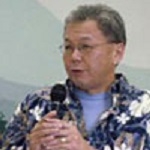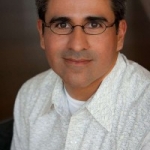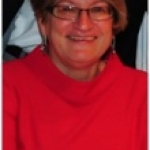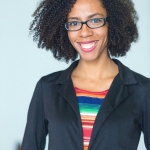arts and diversity
arts and diversity
Reading between the Lines: Crossing the Generational Barriers of Ethnic and Cultural Audience Development
arts and diversity
Creative Excellence

Ms. Katherin Canton
On Shifting Systems and Equity
Posted by Mar 17, 2016

Ms. Katherin Canton
In 2011, I came across a professional development program that was centered on connection, peer learning and “real talk,” Emerging Arts Professionals San Francisco/Bay Area (EAP/SFBA) was a new home for me as I entered the full time arts admin workforce. I was drawn in by the brilliant and compassionate people who represented experiences along the career spectrum, were not afraid to hold space for each other to have tough conversations about work, life, and the field. I share this because the Arts Leadership Forward report reflects EAP/SFBA conversations and I see the connection between Hewlett’s recommendations and successful pilot projects around the region.
Read More
Aja Roberts
Cross-Generational Leadership: The Future of Effective Arts Leadership
Posted by Mar 16, 2016

Aja Roberts
It’s safe to say the arts leadership landscape is changing. Given the external societal changes such as late-career professionals postponing retirement, highly-educated millennials entering the workforce poised to make meaningful contributions, and a more culturally diverse group of emerging leaders, arts organizations must recognize the urgency of these challenges and determine what structural changes or model implementations they will make to reconcile these forces impacting leadership in the arts sector.
In Moving Arts Leadership Forward, it is important for organizations not to remain stagnant. They must understand the state of the arts sector and realize that change is both imminent and inevitable. Working in stagnation will stunt the growth of the arts administration ecosystem, particularly if early- and mid-career leaders are underutilized and arts organizations are left unable to serve their constituents to their full capacity. How will these emerging leaders be able to have real impact within their organizations with limited influence in the workplace?
Read More
Jerry D. Yoshitomi
The Conceptual Emergency in Arts Leadership
Posted by Mar 15, 2016

Jerry D. Yoshitomi
Congratulations and appreciation to our colleagues at The William and Flora Hewlett Foundation for this thoughtful, action-provoking report, Moving Arts Leadership Forward. It describes A Field at Risk. Or, to use a phrase coined by the International Futures Forum in the U.K., we have a conceptual emergency. Some key concepts from the report:
- P. 15: Failure to take into account these dramatic changes in the larger landscape could result …in decisions that inadvertently reinforce the status quo, leading to stagnation in the sector.
- P. 1: The change required is in many ways antithetical to the more traditional form of leadership that our sector currently embraces.
- P. 10: Most executive leaders express a desire to change organizational culture to be more inclusive of generational expectations, but feel they lack models and the support for doing so.
- P. 10: Increasing cross-generational leadership across the field would help it better reflect—and maintain relevance in—a continually diversifying environment.
- P. 14: No longer feasible for one leader alone to manage and respond to the increasingly complex and changing environment.
- - See more at: http://blog.americansforthearts.org/2016/03/15/the-conceptual-emergency-in-arts-leadership#sthash.U3cCnKit.dpuf
- P. 15: Failure to take into account these dramatic changes in the larger landscape could result …in decisions that inadvertently reinforce the status quo, leading to stagnation in the sector.
- P. 1: The change required is in many ways antithetical to the more traditional form of leadership that our sector currently embraces.
- P. 10: Most executive leaders express a desire to change organizational culture to be more inclusive of generational expectations, but feel they lack models and the support for doing so.
- P. 10: Increasing cross-generational leadership across the field would help it better reflect—and maintain relevance in—a continually diversifying environment.
- P. 14: No longer feasible for one leader alone to manage and respond to the increasingly complex and changing environment.

Chris Appleton
Sharing Is Caring: If I Truly Care, I Will Practice Shared Decision Making Structures
Posted by Mar 15, 2016

Chris Appleton
“Every artist was first an amateur” – Ralph Waldo Emerson
When invited to write a blog response to the Hewlett Foundation report on arts leadership, I jumped at the opportunity. Along with my professional and civic interest in advancing leadership models that work across various lines of social difference, it is a topic around which I have feelings and thoughts.
As a 33-year-old executive director of an organization I co-founded while in college, who has no academic training in arts administration and has only held one job as an adult, I read the Moving Arts Leadership Forward report as timely for my career and interests. I can say with candor and hope that it is my desire to remain as the leader of WonderRoot for decades to come—but I would only dream of this so long as my leadership continues to advance the mission of the organization and the people it seeks to serve.
Read More
Ms. Mara Walker
Moving Arts Leadership Forward, Response by Mara Walker, Chief Operating Officer, Americans for the Arts
Posted by Mar 15, 2016

Ms. Mara Walker
It’s not breaking news that America is in the midst of major change due to an aging and diversifying population. And it’s not unusual to be in conversations about how those changes are impacting the leadership of our nation’s nonprofit arts organizations. As the new William and Flora Hewlett Foundation report indicates, economic pressures and shifting demographics have led to cross-generational workplaces that require new strategies for building deeper appreciation for the range of voices and experience that exist within our organizations.
Read More
Roberta Uno
Preparing the Arts Field for a Future Rushing Towards Us
Posted by Mar 15, 2016

Roberta Uno
In the new Hewlett Foundation report, Moving Arts Leadership Forward: A Changing Landscape, John McGuirk, Hewlett’s Program Director for Performing Arts, urges the arts field to reimagine leadership. The report summarizes Hewlett-supported research and previews their new goal to broaden the Foundation’s arts support to embrace cross-generational leadership and advance shared values of diversity and innovation. The findings and recommendations are strategically intended to prepare the field “for a future that is rushing toward us.”
Read More
Dr. Brea M. Heidelberg
Diversity in Arts Administration is Not Inevitable
Posted by Mar 14, 2016

Dr. Brea M. Heidelberg
This report treats diversity as an inevitability. This is true when it comes to demographics–we are all familiar with the statistics about how the country is becoming more racially diverse. However, true diversity (including age, gender, physical ability, and race) is not inevitable when it comes to working and advancing in our field. Numbers do not change power structures–marginalized people often outnumber those in power. It is the assumption that diversity will magically happen that permits some leaders within the field to sit idly by while the sector disenfranchises and loses quality talent. Change is not a passive process.
Read More
Mr. Jeffrey Golde
Distributing & Cultivating Leadership
Posted by Mar 14, 2016

Mr. Jeffrey Golde
As the latest report from the Hewlett Foundation points out, “The nonprofit arts sector is at a critical inflection point…” While there is risk in every path we choose to move forward, I believe great opportunity lies in collaboration between an older generation that worked tirelessly to build the current set of organizations and a new, hungry and highly skilled generation of arts administrators, ready to tackle today’s new challenges.
Ultimately we must solve the problem of how a field limited by funds and vertical job mobility, harness and retain talent? The findings suggest a need for a national discussion about redefining the role and meaning of leadership and how it affects the structure of our organizations. Distributed leadership is proposed as one solution to our current risk of losing emerging talent. I would also add cultivating the learnable skills leaders use. With both these ideas at work, I believe we can unlock value buried in the untapped human capital in our field.
Read More
Marian A. Godfrey
Emergent Leadership Practices
Posted by Mar 14, 2016

Marian A. Godfrey
What do we expect of the next generations of arts leaders? Do we want them to “fix” the ailing nonprofit operating model, or do we want them to blow it up and invent new modes of creating and delivering arts experiences? The answer is yes.
The existing nonprofit arts system, with all its limitations and inequities, is capable of creating transcendent aesthetic experiences. Visionary leaders in some organizations have been applying diligence and innovation to expand the reach and public value of their programs. At the same time, as has always been the case, artists and arts entrepreneurs entering the field are pulling inspiration from the wider environment and making up new versions of arts experiences and organizational structures.
Read More
Abe Flores
Welcome to the “Moving Arts Leadership Forward” Blog Salon
Posted by Mar 14, 2016

Abe Flores
The William and Flora Hewlett Foundation’s new report, Moving Arts Leadership Forward, describes a changing arts leadership and workforce. Americans for the Arts, in partnership with the Hewlett Foundation, has asked a diverse group of arts leaders to respond to the report’s findings and the recommendations it makes for the field. In the next couple of days we will be hearing their responses and hope we will be hearing from you in the comment section.
Read More
Ms. Margy Waller
We Are From the Arts and We’re Here to Help
Posted by Jan 06, 2016

Ms. Margy Waller
When people who work in the arts talk about the value of our contribution in communities, we risk seeming privileged and paternalistic.
Our motivation is just fine, but we don’t realize how we sound sometimes. In the midst of many local and national conversations about the role of the arts in community planning efforts, we should listen carefully to see if we can hear ourselves the way others might.
Read More
Ms. Pam Korza
Cooking up Frameworks - Inviting You to the Evaluation Test Kitchen
Posted by Oct 29, 2015

Ms. Pam Korza
At the October Grantmakers in the Arts (GIA) conference, artist Rosten Woo described the Vendor Power! project, a poster/brochure initiated by the Center for Urban Pedagogy (CUP) and designed by artist Candy Chang to make comprehensible New York City’s most commonly violated street vending rules which are buried in hundreds of pages of impenetrable bureaucratese. For thousands of vendors whose first language is not English, the Vendor Power! poster became an essential tool, directly helping them to understand their rights, avoid fines, and know how to respond when approached by police. Woo reported with satisfaction that, following CUP’s distribution of 10,000 posters, the Dept. of Consumer Affairs seized the poster’s power to address a longstanding institutional problem and printed another 10,000. Here the system took action to change a problematic practice. If only evidence of change was always so clear!
Read More
Mr. Mark Valdez
ART AS SOCIAL JUSTICE
Posted by Oct 27, 2015

Mr. Mark Valdez
Here's a thought: what if we stopped thinking about art and social justice and instead looked at art as social justice? By keeping them separate, we are asked to value one over the other, or worse, we make one subservient, a mere tool that's in service of the other. I posit that maybe they can be one in the same.
I don't mean to imply that all can or should function as social justice. But there is a small and growing part of the field that is proving that the art itself can be a manifestation of social justice.
Read More
Alicia Gregory
Dispatches from the Evaluation Learning Lab
Posted by Oct 26, 2015

Alicia Gregory
In 2014, Animating Democracy, in partnership with the Art x Culture x Social Justice Network (ACSJN) and the Nathan Cummings Foundation launched the Evaluation Learning Lab. The lab builds practical knowledge and resources in three areas as they relate to arts and social change projects and programs: measuring social impact, evaluating artistic/aesthetic dimensions, and equalizing power in evaluation.
Over the past year, guided by the Lab’s theory of change, we’ve gathered 20 artists, arts practitioners, funders, and evaluators in learning exchanges that combined case studies, presentations and discussion around existing evaluation theories and approaches, analysis of current frameworks, criteria, guidelines, and tools, and development of new tools for ethical practices.
Read More
Shoshana Fanizza
Audiencentric Execution for the Future!
Posted by Oct 19, 2015

Shoshana Fanizza
The theme for this year's NAMP Conference is Lift Off! We will be exploring a variety of new techniques and technologies for audience building and obtaining more overall support of our organizations and the arts in general. Before we can Lift Off!, it is wise to look back over the year-to-date and see what has been occurring in order to create our checklist to get ready for Lift Off!
Read More
Chris Dwyer
Arts and Social Justice: Searching for a Framework to Describe Quality
Posted by Oct 29, 2015

Chris Dwyer
I’ve been engaged in planning and conducting evaluations for several decades now and I’m still intrigued by the intellectual puzzles involved even in the smallest evaluation project—especially the challenge of answering the related “compared to what?” and “how meaningful are the results?’ questions. Both are essential for determining the value (e-valu-ation) of the program or idea being evaluated.
Read More
Jason Tseng
What We Talk About When We Talk About Transforming the Field
Posted by Aug 07, 2015

Jason Tseng
“To fundamentally transform the field in order to meet a fundamentally changing nation and time, we need to fundamentally change who is in the field ”
This was the prompt I was given, earlier this year, when I was asked to speak at the Americans for the Arts Convention. It so happens that I spend a lot of time thinking about transforming the arts and culture field; on the account of the fact that I work for Fractured Atlas, a nonprofit technology organization that helps artists with the business side of the creative work, where transforming the status quo of the field is part and parcel of everything that we do.
Read More
Adil Mansoor
Privilege, Access, and the Arts
Posted by Jul 22, 2015

Adil Mansoor
This past June, I had the opportunity to present at the first Cultural Equity Preconference at the 2015 American for the Arts (AFTA) gathering in Chicago, IL. Over 100 people spent three rigorous days thinking about art, diversity, and their own communities. Each presentation created space for me to consider, reflect, and question. From chats over lunch about gay zombie theater to bus rides investigating the urgent need to include dialogue about ability and accessibility in social justice movements, every interaction was steeped in expansive conversations.
Read More
Lara Davis
Offline at AFTACON
Posted by Jun 26, 2015

Lara Davis
Americans for the Arts Annual Convention (AFTACON) regularly draws thousands of members of the arts world to one location for a whirlwind four days of workshops, recognition, plenaries, and arts excursions in some of the most incredible and dynamic cities in the country. There is never enough time to attend all the sessions I’m interested in. They all offer an insight into how art influences our economy, education, and communities – and how we visualize and interpret our world.
Read More
Ashley McDonald

Ms. Felicia W. Shaw
So, What Do You Do?
Posted by Jun 26, 2015

Ashley McDonald

Ms. Felicia W. Shaw
Editor’s Note: Ashley McDonald, Membership Associate at Americans for the Arts, interviewed our member Felicia Shaw about her work in the arts field. At the time of this interview Felicia was in the process of transitioning from her role as interim executive director of Young Audiences of San Diego to her new role as executive director of the Regional Arts Commission (RAC) in her hometown of St. Louis, MO.
AM: Can you describe your role at St. Louis Regional Arts Commission (RAC)?
FS: My job at RAC will be to assume the leadership role of a local arts agency that has had an impressive 30-year history of growing the arts and culture community throughout the St. Louis region. I’ll be working to preserve the vitality of a successful organization that is ready to grow to the next level, particularly at a time when St. Louis is turning the corner and looking to the future. I am charged with establishing a vision for RAC and strategically moving the organization forward in a new and impactful way for the next decade and beyond.
Read More
Tia Harris
Sharing Transformative Histories is Everybody’s Responsibility!
Posted by Apr 30, 2015

Tia Harris
What’s a Weeksville?
Established in 1838, Weeksville became the second largest known independent African American community in pre-Civil War America, the only such community whose residents were distinctive for their urban rather than rural occupations, and the only one that merged into a neighborhood of a major American city after the Civil War. Therefore, Weeksville Heritage Center (WHC) is a nationally significant American historic site and a documented example of an intentional, independent African American community.
Read More
Gregory Burbidge
I Wanna Live Forever
Posted by Apr 14, 2015

Gregory Burbidge
"And we don't care about the young folks, talking 'bout the young style, And we don't care about the old folks, talking 'bout the old style too" -Peter Bjorn and John
I am always excited to read the Emerging Leaders blog salon -- to hear new stories of innovative practices and trends and to read about where our field is headed. Emerging leaders now have the capacity to combine access to big data, informational trends, and artistic vision in ways unheard of even a decade ago. Our standard arts presentation models struggle under the weight of our changing society and have yet to reckon with the new information at our disposal. Take data on aging, for example. What does it look like to re-imagine strategic planning in light of this?
Read More
Olga Garay-English
Latinos, What does the future hold?
Posted by Apr 13, 2015

Olga Garay-English
As I have segued from my nearly seven year stint as the Executive Director of the City of Los Angeles Department of Cultural Affairs and resumed my former role as a local, national, and international arts consultant, I have submerged myself once again in building bridges between the U.S. arts sector and the Latino/Latin American arts communities. Though these communities continue to take on more central roles in the U.S. dialogue, they are still marginalized.
Read More
Elena Muslar
The Millennial Revolution: Young Arts Administrators of Color Reinvigorating the Field
Posted by Apr 13, 2015

Elena Muslar
In more recent times, the arts administration field has begun to recognize the importance of cultivating tomorrow’s leaders. Professional development opportunities have begun to spring up for the “next-gen” or “emerging” leader. These buzzwords have essentially become synonymous with being a “millennial” in this field. Yet the term itself tends to be defined with certain characteristics of being detached, entitled, liberal, and tech savvy – most of which don’t always bode well for a young person trying to emerge into a predominately “baby boomer” arena.
Read More
Abe Flores
Welcome to the “20 Arts Administration Revolutions” Leadership Blog Salon
Posted by Apr 13, 2015

Abe Flores
Arts administration needs a bit of revolutionary thinking for the continued health of the sector. The future of the arts is already here, being ushered in by arts leaders who test norms, continuously evolve, and keenly anticipate tomorrow.
New audiences, technologies, and competition require successful arts leaders to implement new models, develop cross-sector partnerships and allies, and stay focused on their vision. The revolutions in our field do not appear to be complete departures from what we are doing. That is to say most of the fundamental work functions of arts administration remain (e.g. production, marketing, and fundraising). What is in flux are how these functions are carried-out. These new methods and considerations require some revolutionary minds.
Read More







